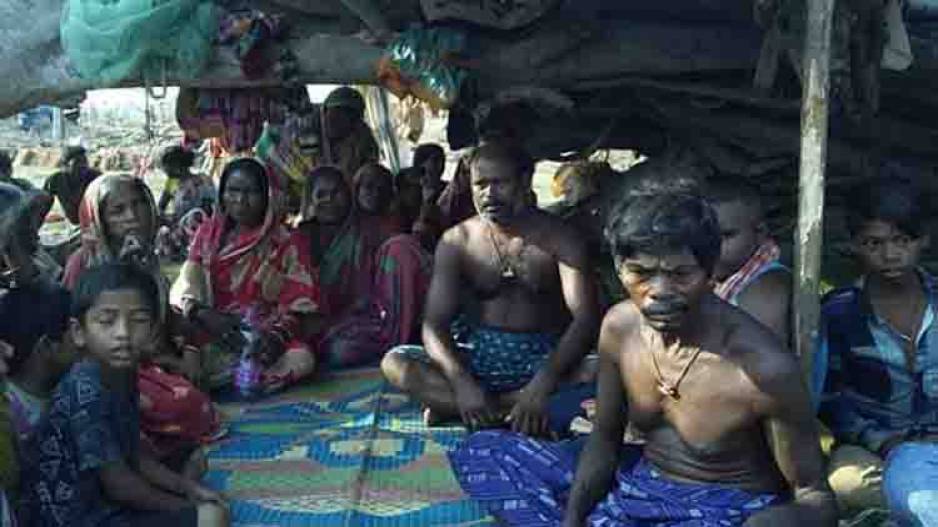Recommended Stories
Former Chief Minister Giridhar Gamang has set the cat among pigeons by raising the question that everyone - except apologists of the Naveen Patnaik government, of course - wanted to ask but did not muster the courage to do so: Did the government, as it has claimed, really ‘evacuate’ 14 lakh people in the hours leading up to Cyclone 'Fani,' the Category 4 cyclonic storm that pounded the Puri coast at wind speeds of nearly 200 km/hour on May3?
In private, many people have raised serious doubts about the government claim, but refrained from talking about it in public probably because no one wanted to be seen as a naysayer or being dubbed an incorrigible whiner at a time when the government was collecting international accolades - based solely on the government's own claim, mind you. It reminded this columnist of the Hockey World Cup last year when anyone who pointed some flaw or shortcoming in the marquee event was promptly labelled 'traitor' by 'proud Odias' who would brook no criticism at a time when the benighted state was having its 15 days under the sun. (This author was at the receiving end of many such epithets!). Others perhaps did not rake up the issue because they thought it would affect the morale of the state government, which is engaged in the massive task of rebuilding and restoration after the large scale devastation wrought by 'Fani'. Still others may have backed off because it is virtually impossible to challenge the government claim since no one really had the mechanism, machinery or manpower - nor the time and inclination - to do a head count of the actual number of people who had checked into safe shelters before the cyclone.
But now that Gamang has flagged the issue, it is time to take it forward and debate it. To begin with, let us have a look at the sequence of events before, during and after the cyclone. On May 2 evening, with 'Fani' barely hours away from the coast, Special Relief Commissioner (SRC) Dr Bishnupada Sethi, the man in overall charge of the entire evacuation exercise, told the media that the government had targeted evacuation of about 11.5 lakh people, about 4.5 lakh of whom had been evacuated till the 'last report came in.' By early next morning, the number of people evacuated had jumped to a staggering 10.85 lakhs! This means over six lakh people had been evacuated in just about 12 hours - and that too at a time when heavy rains and strong winds had already started lashing the would-be affected area, power had gone off and telecom services had already started playing dodgy.
Even more eyebrow-raising was the claim made the next morning (on May 4). The number of evacuees had gone up to 12 lakh by then and further rose to 14 lakh by Day 3 (May 5)! Common sense suggests that the people who have moved into cyclone shelters would rush to see the condition of their houses the moment the rains and winds stop. Logically, therefore, the number of people in safe shelters should have fallen the day after the cyclone and dwindled further the day after. But here we have a strange case where the people apparently kept streaming into shelters even two days after the storm had blown over and their number, instead of coming down, actually went up!
By any reckoning, it was a humongous achievement and no amount of praise is too high for the state government for having pulled it off. But only if it is true. The logistics involved and the hostile weather conditions make one take the claim of shifting six lakh people overnight with a bucketful of salt. A back of the envelope calculation would reveal that no less than 28, 000 buses would be needed to shift that many (assuming that each bus ferried 50), and many times more if other, smaller vehicles of lesser capacity were used for the purpose.
All through May 2, TV channels kept reporting that many people living all along the 480-km long coast from Gopalpur to Balasore, especially fishermen, fought attempts by the authorities to take them to cyclone shelters tooth and nail. In fact, officers engaged in the evacuation operation themselves gave bytes admitting that they were facing resistance from people. How the authorities managed to persuade these people to move out remains a mystery.
Even assuming that the figure of 14 lakh is not exaggerated, is it correct for the state government to corner all the credit for it? It is again common sense to assume that most of them would have come to the shelters on their own because of the dangers of staying on in their places, without depending on logistics support from the government. Is it logical to include them in the list of people evacuated by the government?
As for the flattering article in The New York Times, titled ‘How do you save a million people from cyclone? Ask a poor state in India’, four-time BJD MP Tathagat Satpathy, someone who certainly knows a thing or two about how things work in this government, thinks it has been ‘managed’!
As someone who has seen how such things have been managed in the past, most recently during the Hockey World Cup, this columnist would tend to agree with Mr Satapathy.
(DISCLAIMER: This is an opinion piece. The views expressed are author’s own and have nothing to do with OTV’s charter or views. OTV does not assume any responsibility or liability for the same.)













